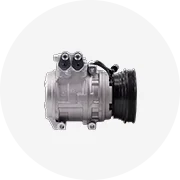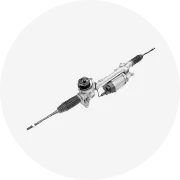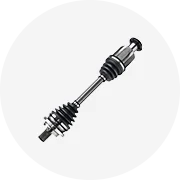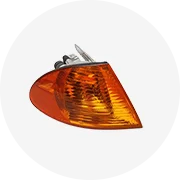Phổ biến trong ngành của bạn






Din653 M3 M4 M6 M5 M6 M8 thép không gỉ nhôm có khía Đen ngón tay cái vít
0,03 US$ - 0,13 US$
Đơn hàng tối thiểu: 1000 Cái
Vận chuyển mỗi chiếc: 0,03 US$







M2 M3 M5 M8 Loại ren chèn ốc vít nhôm thép không gỉ Tự Khai thác ren chèn hạt cho kim loại nhôm
0,03 US$ - 0,05 US$
Đơn hàng tối thiểu: 500 Cái





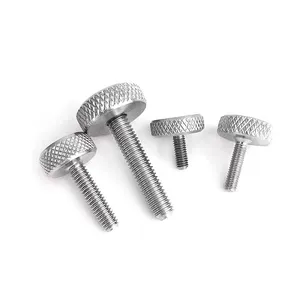

Sản phẩm bán chạy số liệu ngón tay cái vít M6 không gỉ ngón tay cái vít không gỉ có khía ngón tay cái vít thép không gỉ đồng bằng phẳng
0,01 US$ - 0,10 US$
Đơn hàng tối thiểu: 1000 Cái







Nhà máy bán buôn nhôm màu Anodized nhôm vít knurling ngón tay cái vít
0,12 US$ - 0,20 US$
Đơn hàng tối thiểu: 10 Cái
Vận chuyển mỗi chiếc: 6,41 US$






Bán nóng tùy chỉnh Torx giàn Pan đầu tự khoan vít thép không gỉ Hex máy giặt đầu tự khoan Tek vít cho kim loại
0,02 US$
Đơn hàng tối thiểu: 10000 Cái







Nhà Máy 8-32 1/4 "Đầu phẳng M3 M4 M6 Anodized nhôm tùy chỉnh Vai thép không gỉ Brass có khía ngón tay cái vít
0,01 US$ - 0,05 US$
Đơn hàng tối thiểu: 1000 Cái


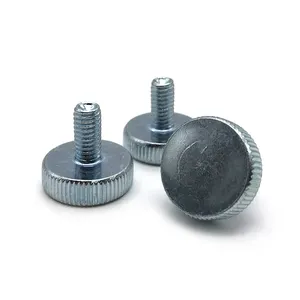



Vít Ngón Cái Có Khía Vít Núm Tùy Chỉnh Màu Đen Kim Loại Nhôm Đồng Thau Vít Ngón Cái Đầu Phẳng Bằng Thép Không Gỉ M6 M3
0,04 US$ - 0,06 US$
Đơn hàng tối thiểu: 5000 Cái




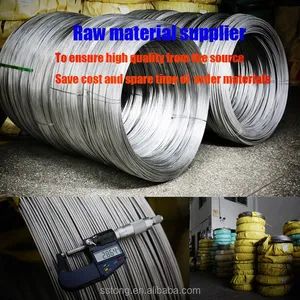

Oxit Đen Anodized Alumina Din 653 Có Khía Đầu Mỏng Nhôm Ngón Tay Cái Vít M1 M1.2 M1.4 M1.6 M2 M2.5 M3 M3.5 M4 M5 M6 M8 M10
0,01 US$ - 0,10 US$
Đơn hàng tối thiểu: 1000 Cái






Ốc Vít Tay Có Khía Bằng Nhôm Anodized M3 Vít Ngón Tay Cái Với Anodized M3X6 Màu Đen
Sẵn sàng vận chuyển
0,18 US$
Đơn hàng tối thiểu: 1000 Cái
Vận chuyển mỗi chiếc: 0,08 US$


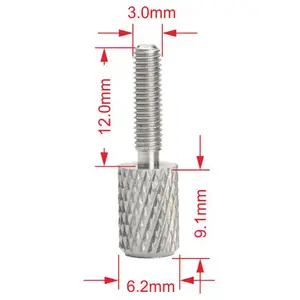



4-40 M2 M3 M4 M5 M6 M7 M8 OEM ODM nhà sản xuất tùy chỉnh nhôm có khía ngón tay cái vít
0,02 US$ - 0,13 US$
Đơn hàng tối thiểu: 1000 Cái






Vít Ngón Cái Có Khía Vít Núm Vặn Bằng Nhựa Màu Đen Kim Loại Nhôm Đồng Thau Vít Ngón Cái Đầu Phẳng Bằng Thép Không Gỉ M6 M3
0,02 US$ - 0,06 US$
Đơn hàng tối thiểu: 5000 Cái






OEM Thép Không Gỉ Brass Tay Điều Chỉnh Knob Knurl Vít M2 M3 M4 Anodized Nhôm Thumb Vít
0,11 US$ - 0,36 US$
Đơn hàng tối thiểu: 100 Cái
Vận chuyển mỗi chiếc: 0,24 US$
Các tìm kiếm liên quan:
vít ngón tay cái bakelitevít đầu wafer oxit đendin7981 philips vítlực lượng điện 8bar atlas copco vítvít titan màu lục giác ổ cắmvít ngón tay cái vỏ máy tínhtornillos largosventas de tornillosvít tấm mini phẫu thuật thần kinhtornillos para maderavít ngón tay cái bằng nhôm có khíavít ngón tay cái bằng nhôm có khíađồng có khía xoay ngón tay cái vítvít ngón tay cái với khía cạnhvít ngón tay cái sus304






Nhà Sản Xuất Tùy Chỉnh Ngón Tay Cái Vít M2 M3 M5 M6 Nhôm Brass Có Knurled Ngón Tay Cái Vít
0,05 US$ - 0,08 US$
Đơn hàng tối thiểu: 5000 Cái



M3 M4 M5 M6 M8 Anodized Nhôm Đầu Có Khía Vít Ngón Tay Cái Bước Vai Có Núm Vặn Bằng Tay
0,01 US$ - 0,05 US$
Đơn hàng tối thiểu: 1000 Cái






Vít Ngón Cái Bằng Hợp Kim Nhôm Đầu Có Khía M4 M5 6-32 8-32 Màu Xanh Dương Màu Vàng Đỏ
0,06 US$
Đơn hàng tối thiểu: 1000 Cái






Tùy chỉnh Anodized đầy màu sắc nhôm có khía ngón tay cái vít M3 M4 M5 M6 M8
0,12 US$ - 0,35 US$
Đơn hàng tối thiểu: 50 Cái






Tuỳ Chỉnh 304 316 Thép Không Gỉ Có Khía Đầu Ngón Tay Cái Vít M3 M4 M5 M6 M8 Guitar Điện Tremolo Cầu Tinh Chỉnh Nhôm Vít
0,10 US$ - 0,13 US$
Đơn hàng tối thiểu: 2000 Cái




M3 Máy Tính PC Máy Tính Trường Hợp Hợp Kim Nhôm Có Khía Ngón Tay Cái Vít
0,01 US$ - 0,12 US$
Đơn hàng tối thiểu: 100 Cái











Bu Lông Núm Vặn Có Khía Bán Sỉ Trung Quốc Vít Ngón Cái Đinh Vít Đầu Phẳng Màu Đen M3 M4 M8 M10 Bằng Nhôm
0,05 US$ - 0,30 US$
Đơn hàng tối thiểu: 200 Cái






M3 M4 M5 M6 Núm Vặn Và Bu Lông Nhôm Ngón Tay Cái Có Khía Tùy Chỉnh Chốt Lắp Phần Cứng
0,08 US$ - 0,33 US$
Đơn hàng tối thiểu: 2000 Cái






Vít Ngón Cái Có Khía Bán Sỉ Trung Quốc Vít Núm Tùy Chỉnh Màu Đen Kim Loại Nhôm Đồng Thau Vít Ngón Cái Đầu Phẳng Bằng Thép Không Gỉ M6 M3
0,02 US$
Đơn hàng tối thiểu: 1000 Cái






Anodized đầy màu sắc nhôm tùy chỉnh M2 M3 M4 M10 M20 vít vít nhựa đen
0,01 US$ - 0,03 US$
Đơn hàng tối thiểu: 1000 Cái






DIYChina Độ Chính Xác Cao Anodized 5/8-20 Thumb Vít M3 M4 M5 M6 Đầu Có Khía Tay Siết Chặt Đầu Bằng Nhôm Có Khía
0,09 US$ - 0,29 US$
Đơn hàng tối thiểu: 100 Cái
Vận chuyển mỗi chiếc: 1,26 US$






Trung Quốc Độ chính xác cao M3 M4 m5anodized màu thép không gỉ Brass nhôm nhựa knurling Twist Knob Knurled ngón tay cái vít
0,01 US$ - 0,10 US$
Đơn hàng tối thiểu: 1000 Cái
Vận chuyển mỗi chiếc: 1,08 US$






Nhà Sản Xuất Tùy Chỉnh Anodized Ngón Tay Cái Vít M2 M3 M5 M6 Nhôm Brass Có Knurled Ngón Tay Cái Vít
0,03 US$ - 0,12 US$
Đơn hàng tối thiểu: 1000 Cái






Tùy chỉnh chất lượng cao chính xác nhôm ngón tay cái vít M2 M3 M5 M6 M8 M10 thép không gỉ có khía ngón tay cái vít
0,03 US$ - 0,23 US$
Đơn hàng tối thiểu: 1000 Cái






Ốc Vít Núm Vặn Bằng Nhôm M3 M4 M5 M6 Vít Vặn Nút Vặn Vai Bằng Bạc Tải Lò Xo Bằng Thép Không Gỉ
0,01 US$ - 0,15 US$
Đơn hàng tối thiểu: 900 Cái






Tùy Chỉnh M2 M3 M4 M5 M6 M8 6061 Hợp Kim Nhôm Anodized Threaded Có Knurled Captive Ngón Tay Cái Vít
0,03 US$ - 0,10 US$
Đơn hàng tối thiểu: 1000 Cái






Vít Ngón Cái Có Khía Tùy Chỉnh M2 M3 M4 M5 M6 M8 Vít Nhôm Có Khía
0,39 US$ - 0,55 US$
Đơn hàng tối thiểu: 1000 Cái




Nhà Sản Xuất Tùy Chỉnh Ngón Tay Cái Vít M2 M3 M5 M6 Nhôm Brass Có Knurled Ngón Tay Cái Vít
0,01 US$ - 0,15 US$
Đơn hàng tối thiểu: 1000 Cái
Vận chuyển mỗi chiếc: 1,79 US$






Anodized đầy màu sắc nhôm tùy chỉnh M2 M3 M4 M10 M20 vít vít nhựa đen
0,06 US$ - 0,10 US$
Đơn hàng tối thiểu: 1000 Cái
Vận chuyển mỗi chiếc: 4,31 US$






Beigain Bán Buôn Vít Ngón Cái Có Khía Đầu Phẳng M3 M4 M8 M10 Bằng Nhôm Titan Thép Không Gỉ Đồng Thau Độ Chính Xác Cao
0,10 US$ - 1,50 US$
Đơn hàng tối thiểu: 10 Cái
Vận chuyển mỗi chiếc: 177,18 US$






Núm Vặn Có Rãnh Thông Dụng PF11 PFC2 Ngón Tay Cái Bằng Nhôm Thép Cacbon Thép Không Gỉ M2 M3 M4 Vít Có Lò Xo Nổi
0,19 US$ - 0,25 US$
Đơn hàng tối thiểu: 1000 Cái






M3 M4 M5 M6 Tùy Chỉnh Có Knurled Ngón Tay Cái Vít Có Knurled Núm Nhôm Vít
0,07 US$ - 0,15 US$
Đơn hàng tối thiểu: 100 Cái
Vận chuyển mỗi chiếc: 0,20 US$






Tùy Chỉnh Đầy Màu Sắc Có Khía Đầu Thumb Vít Anodizing Hợp Kim Nhôm M3 M4 M5 M6 Thumb Vít
0,10 US$ - 1,00 US$
Đơn hàng tối thiểu: 500 Cái
Vận chuyển mỗi chiếc: 1,88 US$






Trung Quốc 8-32 1/4-20 "Thép Không Gỉ Đen Phẳng Tay Thumb Vít Độ Chính Xác Cao M3 M4 M5 M6 Nhôm Brass Khía Thumb Vít
0,90 US$ - 1,00 US$
Đơn hàng tối thiểu: 50000 Cái






Độ chính xác cao và giá tốt M3 M4 M5 M6 có khía Anodized nhôm ngón tay cái vít
0,01 US$ - 0,10 US$
Đơn hàng tối thiểu: 1000 Cái






M3 M4 M5 M6 Tùy Chỉnh Anodized Nhôm Có Knurled Đầu Trường Hợp Máy Tính Tay Thắt Chặt Ngón Tay Cái Vít
0,09 US$
Đơn hàng tối thiểu: 1000 Cái






M3 M4 M5 M6 Nhôm Có Knurled Ngón Tay Cái Vít Trường Hợp Máy Tính Đầy Màu Sắc Vít Điều Chỉnh Máy Tính Vít
0,01 US$ - 0,05 US$
Đơn hàng tối thiểu: 100 Cái
Vận chuyển mỗi chiếc: 1,15 US$
Các danh mục hàng đầu
Giới thiệu về m3 có khía nhôm ngón tay cái vít
Lo lắng về việc mua một phù hợp. m3 có khía nhôm ngón tay cái vít cho phương tiện của bạn? Alibaba.com mang đến chất lượng tốt nhất, bền và phụ tùng đã được kiểm chứng cho tất cả các loại xe của bạn với giá cả phải chăng nhất. Những cái này. m3 có khía nhôm ngón tay cái vít phù hợp lý tưởng cho tất cả các loại xe hạng nhỏ, hạng trung và hạng nặng của bạn bất kể kiểu xe của chúng .. m3 có khía nhôm ngón tay cái vít có sẵn trên trang web có thể truy cập được ở các kích thước, hình dạng khác nhau, công suất và trọng lượng tùy thuộc vào yêu cầu xe của bạn.
Chất lượng của. m3 có khía nhôm ngón tay cái vít xe của bạn đóng một vai trò quan trọng trong việc bảo trì và hoạt động của xe và bạn không được thỏa hiệp với chúng. Những cái này. m3 có khía nhôm ngón tay cái vít trên trang web được làm bằng vật liệu bền như kim loại và nhôm để tồn tại trong một khoảng thời gian dài và có thể phù hợp chính xác với kiểu ô tô của bạn. Kể từ khi những. m3 có khía nhôm ngón tay cái vít có giá đồng đều, bạn cũng không cần lo lắng về các khoản chi phí.
Alibaba.com cho phép bạn tùy chỉnh những điều này một cách mạnh mẽ. m3 có khía nhôm ngón tay cái vít phù hợp với yêu cầu của bạn và bạn có thể chỉ cần đặt hàng tùy chỉnh cho mẫu ô tô của mình với chi phí danh nghĩa. Những cái này. m3 có khía nhôm ngón tay cái vít dễ lắp ráp và lắp vào ô tô của bạn để nâng cao hiệu suất. Các kỹ sư chuyên nghiệp đảm bảo chất lượng của chúng. m3 có khía nhôm ngón tay cái vít đăng giai đoạn thử nghiệm của họ cùng với giấy chứng nhận. Các sản phẩm này cũng có nhiều màu sắc riêng biệt để chúng có thể phù hợp với màu xe của bạn.
Tìm kiếm những sản phẩm độc đáo và bền này tại Alibaba.com và khám phá qua nhiều loại. m3 có khía nhôm ngón tay cái vít tùy chọn cho phù hợp với ngân sách của bạn. Các mặt hàng này được chứng nhận ISO, TSV và CE và cũng có sẵn dưới dạng đơn đặt hàng OEM. Bạn cũng có thể đặt hàng đóng gói tùy chỉnh nếu bạn mua số lượng lớn.
Chất lượng của. m3 có khía nhôm ngón tay cái vít xe của bạn đóng một vai trò quan trọng trong việc bảo trì và hoạt động của xe và bạn không được thỏa hiệp với chúng. Những cái này. m3 có khía nhôm ngón tay cái vít trên trang web được làm bằng vật liệu bền như kim loại và nhôm để tồn tại trong một khoảng thời gian dài và có thể phù hợp chính xác với kiểu ô tô của bạn. Kể từ khi những. m3 có khía nhôm ngón tay cái vít có giá đồng đều, bạn cũng không cần lo lắng về các khoản chi phí.
Alibaba.com cho phép bạn tùy chỉnh những điều này một cách mạnh mẽ. m3 có khía nhôm ngón tay cái vít phù hợp với yêu cầu của bạn và bạn có thể chỉ cần đặt hàng tùy chỉnh cho mẫu ô tô của mình với chi phí danh nghĩa. Những cái này. m3 có khía nhôm ngón tay cái vít dễ lắp ráp và lắp vào ô tô của bạn để nâng cao hiệu suất. Các kỹ sư chuyên nghiệp đảm bảo chất lượng của chúng. m3 có khía nhôm ngón tay cái vít đăng giai đoạn thử nghiệm của họ cùng với giấy chứng nhận. Các sản phẩm này cũng có nhiều màu sắc riêng biệt để chúng có thể phù hợp với màu xe của bạn.
Tìm kiếm những sản phẩm độc đáo và bền này tại Alibaba.com và khám phá qua nhiều loại. m3 có khía nhôm ngón tay cái vít tùy chọn cho phù hợp với ngân sách của bạn. Các mặt hàng này được chứng nhận ISO, TSV và CE và cũng có sẵn dưới dạng đơn đặt hàng OEM. Bạn cũng có thể đặt hàng đóng gói tùy chỉnh nếu bạn mua số lượng lớn.

















